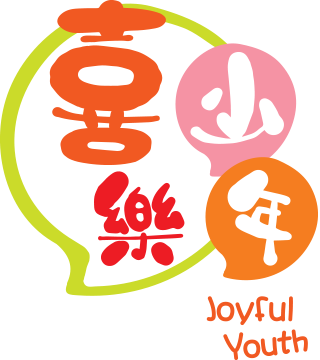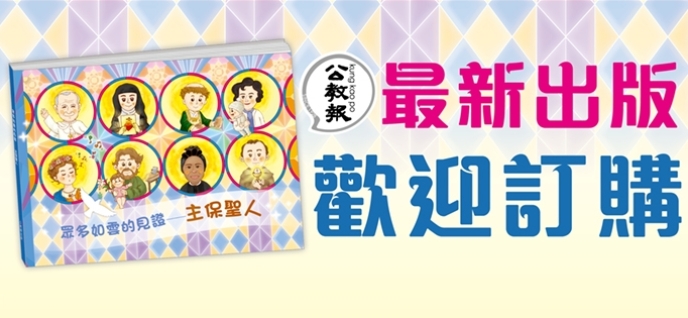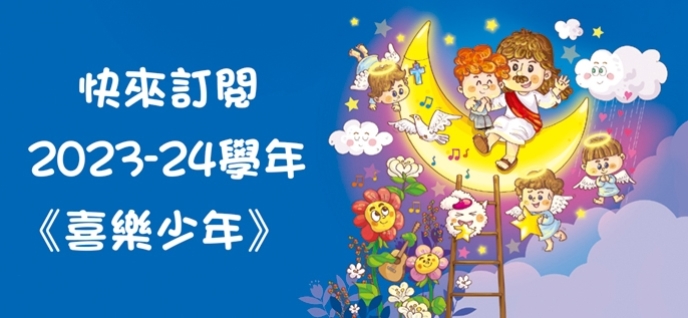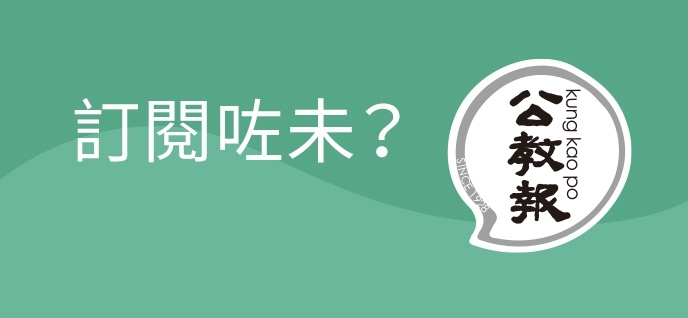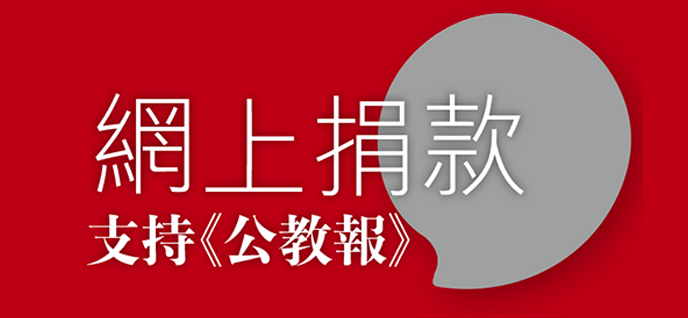昔日文章


Stories behind famous saysings
2018.06.22
Burn the candle at both ends
In Hong Kong, primary schools usually hold their final exams in mid-June. How do you prepare for the exam? During the revision weeks, most of you might get up early and stay up late. To get good results, it is common for students to burn the candle at both ends during this time.
In current usage, the idiom “burn the candle at both ends” means that a person works or does too many things from early morning until late at night and gets very tired. It original meaning was entirely different when it was first used in the 18th century.
An important English dictionary, “Dictionarium Britannicum”(1736), defined this saying as a couple wasting a lot of money by leading a spendthrift life.
“The Candle burns at both Ends. Said when Husband and Wife are both Spendthrifts.”
If you place a candle horizontally and burn it at both ends, the candle will burn out quickly. Candles were used for household lighting for many hundreds of years until gas lamps were invented in the 19th century. While wealthy families could afford to keep their houses brightly lit, candles were still expensive to poor people.
Scholars believed that the English expression was translated from a French phrase, “Brûler la chandelle par les deux bouts”, in 1611.
Nowadays, this idiom is also used to describe over-exhaustion as a result of too much play.
He was in a party all night. He was definitely burning the candle at both ends(一根燭兩頭燒;過度疲勞).
Wishing all of you a lovely summer holiday!
Glossary
Revision
複習
Stay up
熬夜
Couple
夫婦
Spendthrift
揮霍
Horizontally
橫向
Household
lighting
家居照明
Afford
負擔得起
Over-
exhaustion
過度疲累
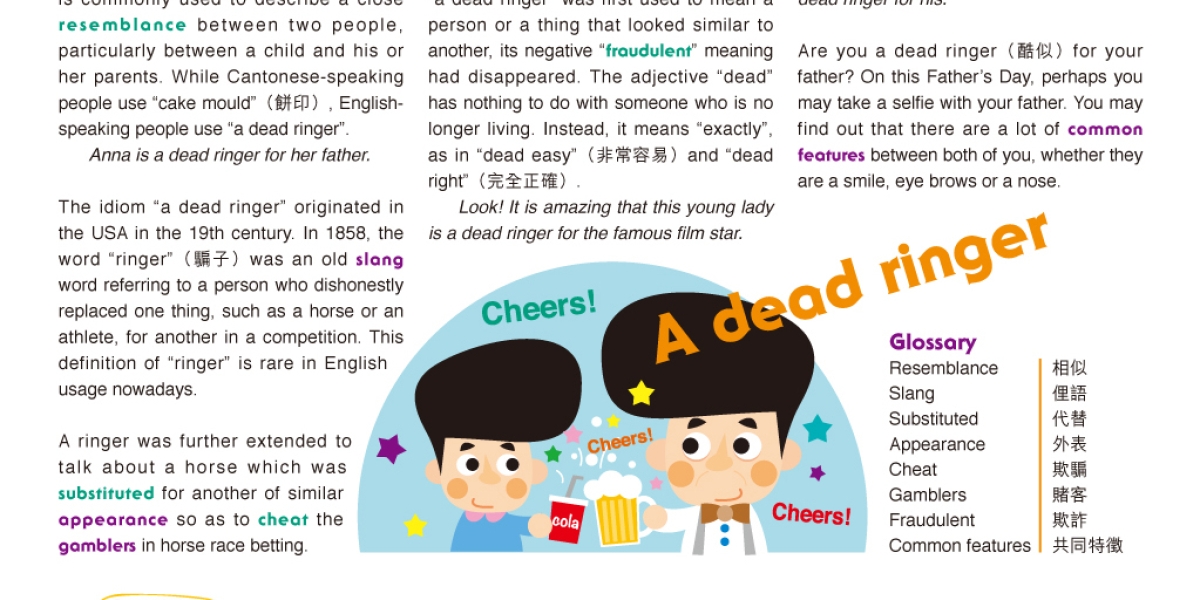

Stories behind famous saysings
2018.06.15
A dead ringer
In both Cantonese and English, a phrase is commonly used to describe a close resemblance between two people, particularly between a child and his or her parents. While Cantonese-speaking people use “cake mould”(餅印), English-speaking people use “a dead ringer”.
Anna is a dead ringer for her father.
The idiom “a dead ringer” originated in the USA in the 19th century. In 1858, the word “ringer”(騙子)was an old slang word referring to a person who dishonestly replaced one thing, such as a horse or an athlete, for another in a competition. This definition of “ringer” is rare in English usage nowadays.
A ringer was further extended to talk about a horse which was substituted for another of similar appearance so as to cheat the gamblers in horse race betting.
In the late 19th century, when the idiom “a dead ringer” was first used to mean a person or a thing that looked similar to another, its negative “fraudulent” meaning had disappeared. The adjective “dead” has nothing to do with someone who is no longer living. Instead, it means “exactly”, as in “dead easy”(非常容易)and “dead right”(完全正確).
Look! It is amazing that this young lady is a dead ringer for the famous film star.
Despite different brands, my car is a dead ringer for his.
Are you a dead ringer(酷似)for your father? On this Father’s Day, perhaps you may take a selfie with your father. You may find out that there are a lot of common features between both of you, whether they are a smile, eye brows or a nose.
Glossary
Resemblance
相似
Slang
俚語
Substituted
代替
Appearance
外表
Cheat
欺騙
Gamblers
賭客
Fraudulent
欺詐
Common features
共同特徵


Stories behind famous saysings
2018.06.08
Tie the knot
A couple of weeks ago, the royal wedding of Prince Harry and Meghan Markle took place at Windsor Castle in England. People around the world were attracted by the spectacular event. Did you watch the ceremony as the pair tied the knot?
What kind of knot is it in the idiom “tie the knot”(結婚;永結同心)? While its origin is uncertain, it is believed that it refers to a traditional Celtic “handfasting” (握手婚約)custom. The Celts (pronounced “kelts”)were powerful tribes of people who lived in central and northern Europe, such as Britain and Ireland, in the 7th century BC. During the Celtic(凱爾特人的)ceremony, the man and the woman were tied at the wrist to symbolise their bond. Handfasting could refer to either engagement or wedding.
The written form of this expression was first found in a poem written by Matthew Prior, an English poet, in 1718.
“So to the priest their case they tell:
He ties the knot; and all goes well.”
Nowadays, some Western weddings have brought back this handfasting custom. However, how the knotting is performed i s d i fferent among couples. They can decide what kind and what colours of the knot they use. For example, some couples have their hands bound with ribbons of several colours in the middle of the wedding and then make their vows.
Different cultures have their own marriage customs. Chinese people value the importance of marriage. They have many auspicious sayings which describe traditional practices and bring blessings to the couples. Do you know any of these?
Glossary
Ceremony
典禮
Bond
結合
Engagement
訂婚
Knotting
打結
Couples
夫妻;情侶
Vows
誓約
Auspicious
吉祥
Blessings
祝福


Stories behind famous saysings
2018.06.01
Long in the tooth
How can we know that someone is old without directly asking about his or her age? Some physical signs, such as grey hair and wrinkles, might help. Since teeth are also a sign of ageing, some people think that the idiom “long in the tooth”, which means old age, refers to human teeth.
She is a bit long in the tooth (老;年紀大)to do disco dancing.
This expression is actually related to a horse’s teeth. Many years ago, before the invention of vehicles, horses were used as the primary means of transportation to carry people and goods. Thus, people were very concerned about the age of a horse. It was a traditional skill to estimate a horse’s age by examining its teeth. Experience told people that when a horse gets older, its gums will recede and the roots of its teeth will be clearly seen. As a result, the horse’s teeth look longer.
Scholars said that similar phrases appeared in Latin as early as the 16th century. However, it was not until the 19th century when the English version appeared. For example, British author William Makepeace Thackeray used this saying to describe a woman in his novel “The History of Henry Esmond” published in 1852.
“She was lean, and yellow, and long in the tooth; all the red and white in all the toyshops of London could not make a beauty of her.”
Nowadays, this expression is also used to describe things which are outdated or too old to do a good job.
The washing machine is getting a little long in tooth. It cannot remove clothing stains.
Glossary
Physical signs
身體跡象
Wrinkles
皺紋
Ageing
老化
Primary
主要
Concerned
關注
Gums
牙齦
Recede
萎縮
Outdated
陳舊;過時
